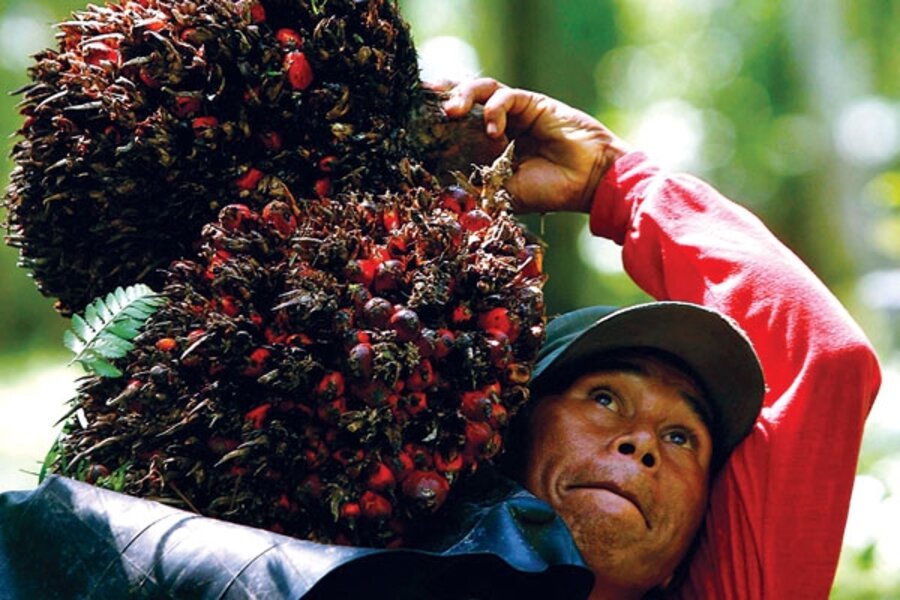Sizing up palm oil
Loading...
It’s lurking, unlabeled, in hundreds of household products from lip gloss to baby formula to potato chips. While it doesn’t sound (and need not be) nefarious, activist groups worldwide argue that the production of palm oil is currently harming rain forests in Southeast Asia, orangutans, and the environment.
But the American Palm Oil Council calls it “nature’s gift to the world.”
So, which is it?
Made from the flesh of fruit from oil palm trees, palm oil stepped into the void when towering oil prices put pressure on companies worldwide to find alternative sources for products from biofuel to shampoo. Demand for the oil surged by an average of 2.2 million metric tons worldwide each year between 2000 and 2009.
Although palm oil saves money, when carbon-rich peatlands in nations such as Indonesia and Malaysia are drained and turned into palm oil groves, the environmental impacts are enormous, says a 2009 United Nations Environment Program report.
The report notes that because of the additional release of carbon sequestered in peatland as a result of some forms of palm oil farming, its combustion “generates 3 to 9 times the amount of CO2 produced by burning coal.” The upshot? A carbon debt “requiring 420 years of biofuel production to repay.”
Another loser in increased palm oil production is the orangutan, which lives exclusively in the palm oil meccas of Borneo and Sumatra and inhabits lowland areas near rivers that are also favored for palm oil plantations. Zoos Victoria in Australia estimates that palm oil development causes the deaths of up to 50 orangutans per week.
To help prevent loss of orangutan habitat and the adverse environmental effects of most current palm oil production, environmental groups, palm oil producers, and companies that use the oil have banded together to form the Roundtable on Sustainable Palm Oil (RSPO). Its goal: to advance the production and use of sustainable palm oil.
This may be the start of a solution, but “it’s not going far enough,” said Leila Salazar-Lopez, rain forest agribusiness campaign director for the Rainforest Action Network, during a panel on palm oil policy in Boston. “We applaud companies that are members of the RSPO but we need further action.”
Companies can buy sustainable credits to help support farmers who produce ecofriendly palm oil, but the small supply so far makes this unfeasible on a large scale, says Jeffrey Hollender, executive chairman of Seventh Generation, which makes environmentally friendly household products. As a result, sustainable palm oil is unavailable as a pure product. Instead, it’s mixed with regular palm oil. Consumers have no way of knowing how the palm oil in products they buy was produced.
Solid dialogue between the palm oil industry and environmental activists is important and has been aided by the existence of the RSPO, says Serge Wich, a researcher at the Great Ape Trust of Iowa, a conservation group. “I think that we need to have a constructive dialogue with the palm oil industry,” he says. “If we’re going to say the palm oil industry is the problem, and we’re not going to provide constructive solutions, then that’s not going to help.”
Editor’s note: For more articles about the environment, see the Monitor’s main environment page, which offers information on many environment topics. Also, check out our Bright Green blog archive and our RSS feed.





